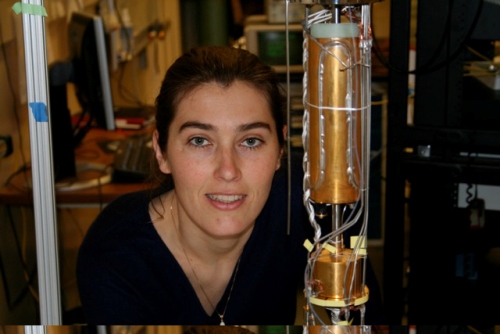A research study titled ‘Coherent Sensing of a Mechanical Resonator with a Single Spin Qubit’ by Ania Bleszynski Jayich from the University of California - Santa Barbara (UCSB) brings the future quantum computer and nanoscale magnetic resonance imaging (MRI) one step closer to reality.
 Ania Bleszynski Jayich
Ania Bleszynski Jayich
The study findings have been reported in the journal Science’s online version, Science Express. The study is based on a project at Harvard University where Jayich worked on an experiment that integrated diamond’s nitrogen-vacancy (NV) centers to nanomechanical resonators.
Jayich explained that diamond’s NV center is its unique defect, which demonstrates a quantum magnetic behavior called spin. The combination of a magnetic mechanical resonator and an individual spin in diamond forms a device capable of generating or selecting particular frequencies, paving the way to develop a novel nanoscale sensing technique for applications in technology and biology.
According to Jayich, one of the possible future applications of the novel technique is MRI on a nanoscale to image protein structures. Jayich informed that physics, which will enable the NV center to determine a resonator’s magnetic field, may help realize MRI on the nanoscale. It may develop more accurate MRI that can see more.
Jayich further said that there is a possibility for such a combination to be developed and used as a potential way to develop a quantum computer or a hybrid quantum system.
Jayich partnered on the work with J.G.E. Harris from Yale, Peter Rabl from the Institute for Quantum Optics and Quantum Information of the Austrian Academy of Science and the Harvard University research team comprising Mikhail Lukin, Steven Bennett, Quirin Unterreithmeier and Shimon Kolkowitz.
The National Science Foundation, the Packard Foundation and the Center for Ultracold Atoms partly supported the work.